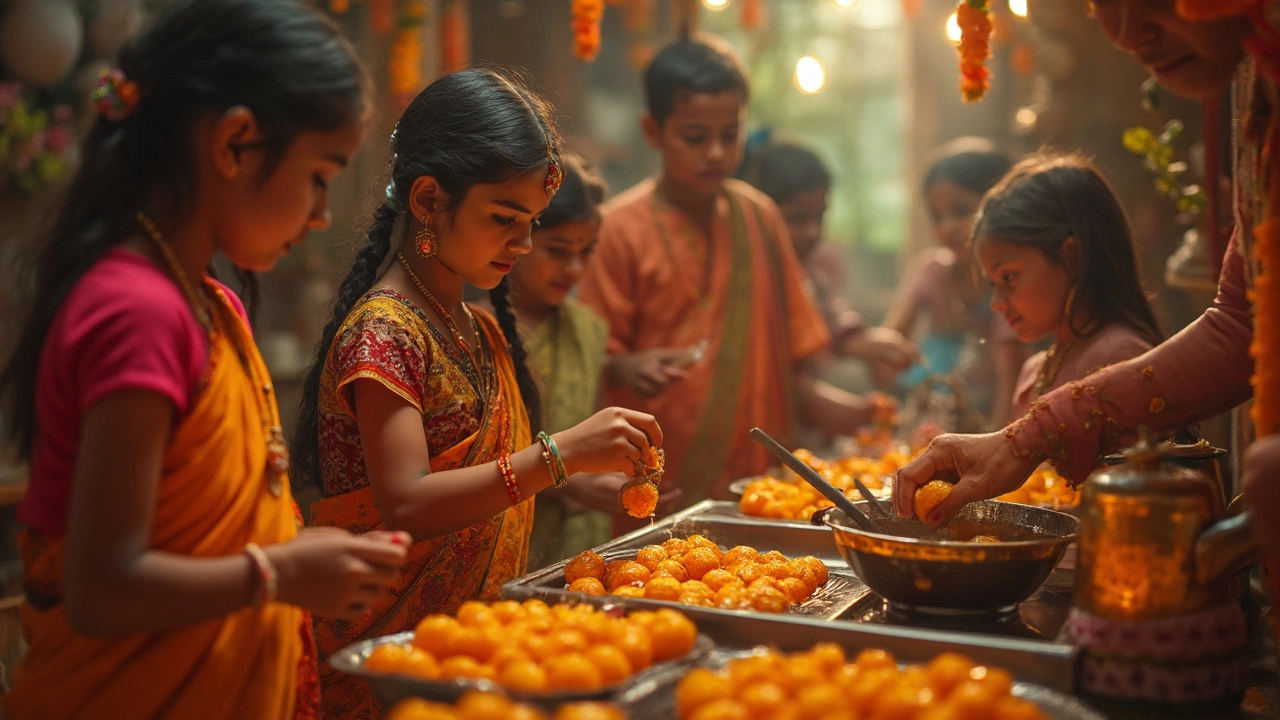Indian Sweet Recipes You Can Make at Home
Indian sweets, or mithai, are a big part of celebrations, but they don’t have to be a mystery. In this guide you’ll find plain‑spoken instructions for popular treats and smarter swaps that keep the taste but cut the guilt.
Classic Festival Mithai Made Simple
First up, the crowd‑pleasers. Gulab jamun, rasgulla, and jalebi are everywhere during Diwali and weddings. The good news? You only need a few ingredients and a pan. For gulab jamun, mix khoya or milk powder with a little flour, roll into smooth balls, and fry until golden. Then simmer them in a sugar‑spice syrup with cardamom and a splash of rose water. The result is soft, melt‑in‑your‑mouth balls that taste just like the ones you buy.
Rasgulla follows a similar shortcut. Knead paneer with a pinch of salt, roll into smooth spheres, and poach in boiling sugar water. The key is gentle heat – too high and the balls crack. After a few minutes, they puff up and soak up the syrup, creating that spongy texture we love.
Jalebi can be intimidating, but it’s basically a fermented batter fried in a spiral shape and dunked in sugar syrup. Use all‑purpose flour, a little yogurt, and let the batter rest for a few hours. When it’s bubbly, pipe the swirls into hot oil, flip quickly, and soak in warm syrup. The result is crisp, sticky ribbons that taste like festival fireworks.
Healthier Sweet Swaps Without Losing Flavor
If you watch calories or sugar, there are easy tricks. Replace refined sugar with jaggery, coconut sugar, or a blend of dates and figs. These sweeteners add depth and a hint of caramel without the spike. For oil‑heavy sweets like laddoo, swap ghee with a mix of light coconut oil and a spoonful of almond butter – you keep richness while cutting saturated fat.
Try using whole‑grain flours instead of plain maida. A mix of whole wheat and rice flour works well for kheer or payasam, giving a nuttier bite. Adding a handful of nuts or seeds boosts protein and crunch – think roasted cashews, pumpkin seeds, or even toasted quinoa.
Portion control is another cheat. Shape sweets into bite‑size pieces and serve on a small plate. A single piece of barfi or a mini peda satisfies the craving without overdoing it. Pair them with a cup of masala chai; the spices in the tea help balance the sweetness.
Finally, experiment with fruit‑based sweets. Mango puri, banana halwa, or coconut‑lime ladoo bring natural sweetness and freshness. They’re quick – blend ripe fruit, stir with a bit of milk or coconut cream, and finish with a sprinkle of cardamom.
Whether you’re cooking for a festival, a family dinner, or just a sweet snack, Indian sweet recipes are flexible. Stick to the basics, swap in healthier ingredients when you can, and trust your palate to guide you. You’ll end up with desserts that taste authentic, look beautiful, and keep you feeling good.
Most Popular Indian Sweet: Why Gulab Jamun Steals the Show
Gulab Jamun stands tall as the favorite Indian sweet, loved by kids and adults everywhere. This article unpacks what makes Gulab Jamun the top pick, shares quick tips for getting it right at home, and uncovers fun facts you probably haven’t heard. Get simple tricks for perfect texture and deep flavor—no pastry chef skills required. From Indian festivals to family dinners, find out why everyone’s obsessed. You’ll even discover shortcuts for beginners or busy families.
